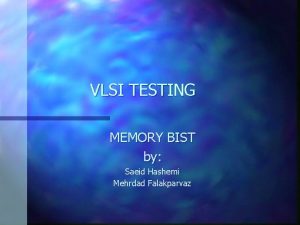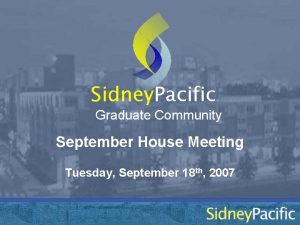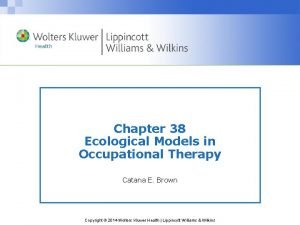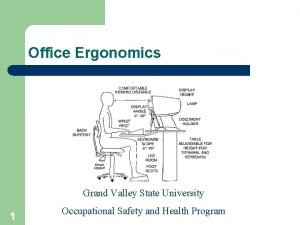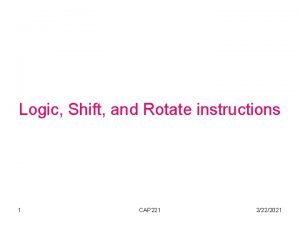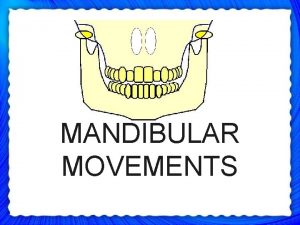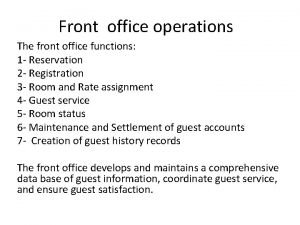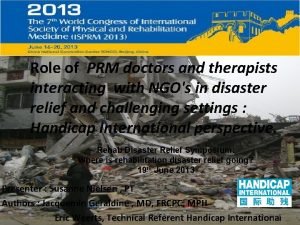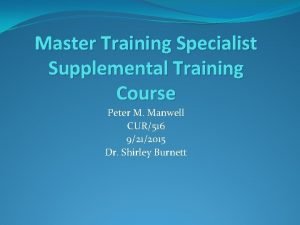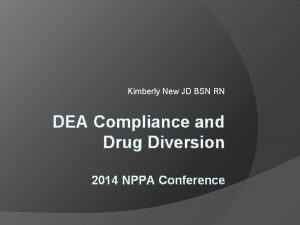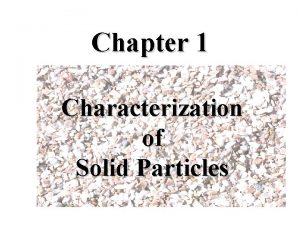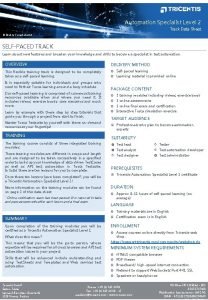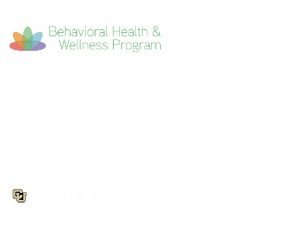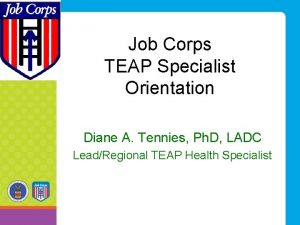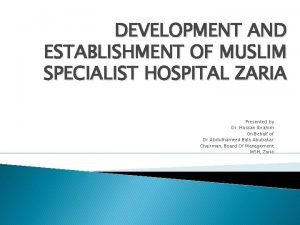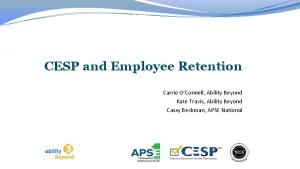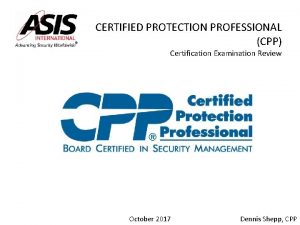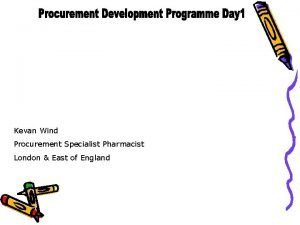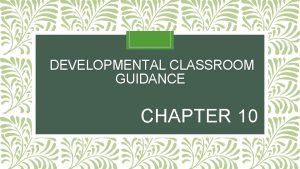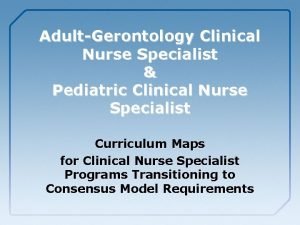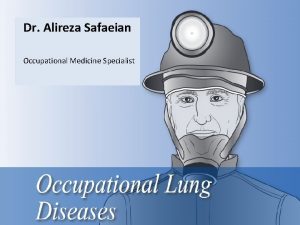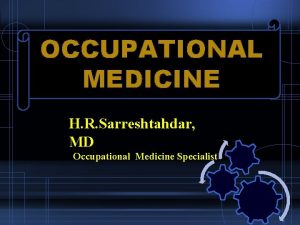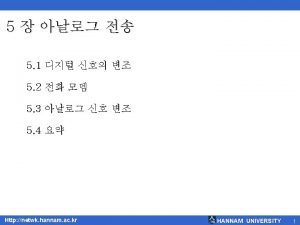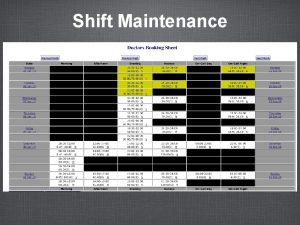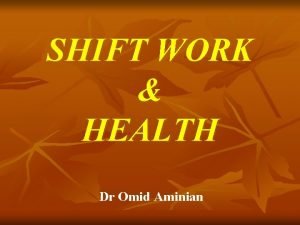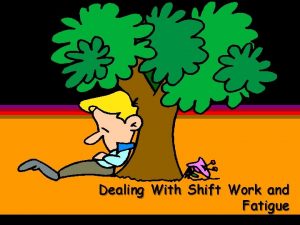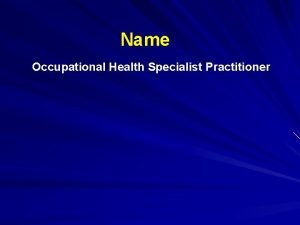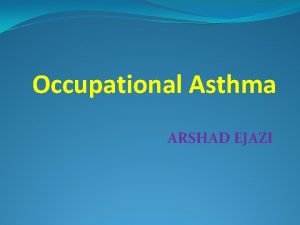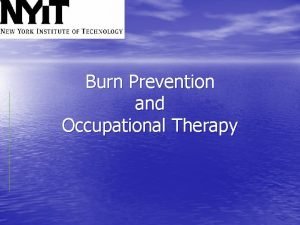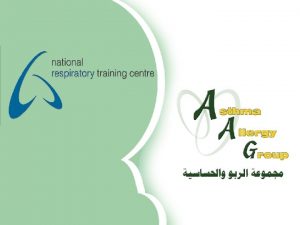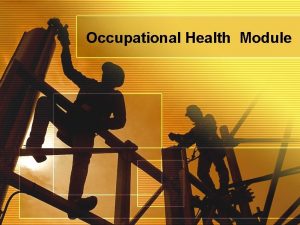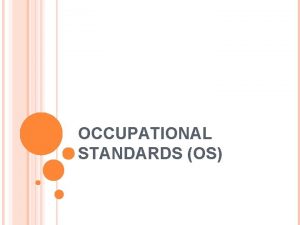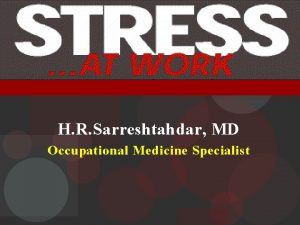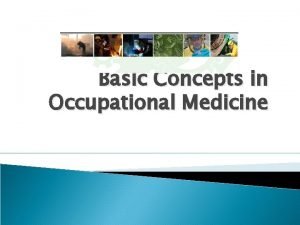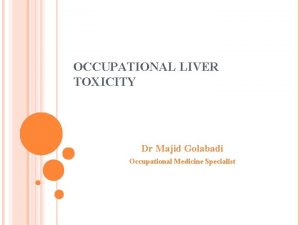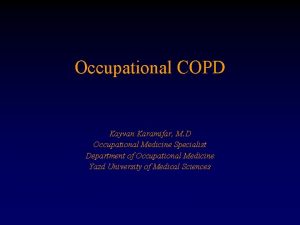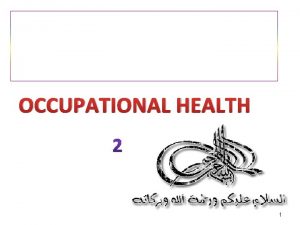1 Shift Work Dr Hashemi Occupational Medicine Specialist

































































- Slides: 65

1

Shift Work Dr Hashemi Occupational Medicine Specialist 2

What is shift work? Shift work is defined as work outside of the normal daylight hours from about 7 am until 6 pm Midnight Noon Midnight 3

Why do we need shift work? 4

Why do we need shift work? (count) v. Production process > 8 hours or continuous v. Expensive machinery that must be used continuously to be profitable 5

Shift work types: 1. Fixed pattern • Night • Evening 2. Rotating pattern • Clockwise (morning- evening- night) • Rapid (1 -3 days) • slow (5 days or more) • Counter clockwise (night-evening- morning) • Rapid • slow 6

Shift work types: (count. ) 3. Oscillating shift work: – Rotating between eveningmorning or evening-night shifts 4. Split shift work: – Bakers, 3 or 4 hre intervals between shifts 5. Relief Shift work: – Work is depend on other worker’s absent 7

What type is prefer? • Rotating shifts are more better than fix types (night shifts divide to all workers) • Forward shifts are better than backward • Fast rotating shifts are better (if slow rotating shift used, it is better to be at least 21 days) 8

What type is prefer? (count. ) • 8 hr shift: – 8 hre for work, 8 for family & social interactions, 8 for sleep – Better for works that need more concentration and alertness like monotonous and safety sensitive tasks – Each week: 6 days in work – More flexible than 12 hr shifts 9

What type is prefer? (count. ) • 12 hr shift: – More accident and fatigue – Not appropriate for elderly and pregnant – Not used for safety sensitive work and those have high exposure to hazardous factors – Need rest within shift – Less flexible – Each week: 5 days work 10

Why can shift work be difficult? • Sleep Disturbance • Circadian rhythm Disturbance 11

Sleep Disturbance Some animals are: NOCTURNAL That is, they are biologically programmed to sleep during the day and be awake at night. e. g. owls, bats, raccoons Humans Are: DIURNAL That is, we are biologically programmed to sleep at night and be awake during the day. 12

Circadian rhythm disturbance: How does Internal Biological Clock work? • Circadian rhythm • External stimulants 13

Circadian rhythm: (count. ) Hormone and gastric secretions Body tempreture Bronchial reactivity Blood Pressure Sexual arousal Anxiety Metabolic Rate Short term memory Work performance 14


Circadian rhythm: (count. ) • Different body functions vary during the 24 hour day • Metabolism is greatest in the afternoon to evening • Most people most alert 10 AM-8 PM and most sleepy 2 -4 AM • The body has a natural cycle of 25 hrs so External factors synchronize us to a 24 hrs day • The internal clock is located in the suprachiasmatic nucleus hypothalmus 16

The Suprachiasmatic Nucleus 17


External clues “Zeitgebers” Time givers Light/Dark cycle Timing of meals Social interactions Actual time clock 19

Hazards of Shift work 1. Increased risk of errors & accidents in the work and out of the work 2. Increase in health problems 3. Increase in social and family problems 20

Shift work hazards 1. Alertness and Accidents • Cognitive Ability: • Deterioration in cognitive ability in shift workers vs. non shift workers. • This increases with duration of exposure • The effect seems to diminish 4 years after discontinuation

• Fatigue affects alertness in many shift workers • 80 -90 % of shiftworkers feel sleepy during night shift (? % nap!) • Studies show increase in accident rate • Tendency for more severe / serious accidents to occur 22

Fatigue Effects on Performance • Impaired logical reasoning and decision-making • Impaired vigilance and attention • Slowed mental operations • Loss of situational awareness • Slowed reaction time 23

Major Fatigue Factors • Time of Day: between midnight and 6 AM • Cumulative Sleep Debt: More than eight hours accumulation. • Acute Sleep Debt: Less than eight hours in last 24 hrs. • Continuous Hours Awake: More than 17 hours since the last sleep period 24

Numbers Fatigue Related Accidents Midnight Noon Midnight 25

Numbers Meter Reading Errors Midnight Noon Midnight 26

Biological Rhythms Relative Alertness Drowsy Fully Alert Midnight Noon Midnight 27

Fu Al ll er tn es s Time of Day & Major Accidents Exxon Valdez 00: 15 15 Chernobyl 01: 23 5 Bhopal 01: 00 Dr ow sy 10 Three Mile Island 04: 00 12 Noon 15 18 21 00 Midnight 03 06 09 12 Noon 28





Shift work hazards 2. Health effects A. Short effects: • Sleep disturbance • Prolonged exposure to chemical and biological substances and other hazards 33

A. Short effects: Sleep disturbance • day sleep is shorter (1 -2 hrs) and of poorer quality than night sleep 1. Circadian rhythms (daily rhythms) in body clock keeps body awake and alert during the day; daytime not suitable for sleep! ü Circadian rhythm of alertness means night workers are most sleepy at work and driving home 2. Other ‘disturbances’ during the day eg. § noise § light 34


Health effects: B. Long effects: • • GI problems Cardiovascular problems Reproductive effects Cancer Endocrine dis. Psychologic dis. Exacerbation of: • Sleep disorders • Asthma • Diabetes mellitus • Coronary Artery Disease 36

GI problems: • 75% of night workers vs. 20% of day workers • Complaints – – – Loss of appetite Constipation Dyspepsia Heart burn Abdominal pain Flatulence • Many problems may not show up until years later • Reasons – – – Poor food quality More caffeine More alcohol More tobacco Drugs used to keep awake 37

Cardiovascular problems • Increased incidence of ischemic heart disease • May be related to: • disturbance of circadian blood pressure and pulse rate • Substance abuse more likely in shift workers • Elevated triglyceride levels 38

Cardiovascular problems (count. ) • Hypertension: • Shift workers were found to have approximately 25% greater chance of developing hypertension than non shift workers 39

Reproductive problems: Spontaneous abortion Preterm labor Low birth weight Menstrual problems 40

Cancer • At least three nights per month for 15 or more years may increase the risk of Colorectal cancer in women • Shorter durations also have increased risk • Due to the suppression of melatonin production with nocturnal light exposure. Melatonin has antineoplastic properties • Breast Cancer inhibition of melatonin production by light exposure during the night 41

Endocrine Dis. • Shift work may lead to DM: – Increase insulin resistance • Increase Cortisol • Increase Catecholamines • Metabolic syndrome 42

Psychologic dis. • More depression • More likely to use psychotropic drugs or require hospitalization • Magnification of underlying depression or bipolar disorders 43

3. Social and family problems • Increases • • • Divorce Family violence Social Isolation Sexual dysfunction May affect women more than men 44

Medical evaluation for shift workers: History: CAD GI Dis. Sleep Dis. Epilepsy Diabetes Asthma Difficulty in night vision 45

Shift work Maladaptation • 15 -20% of workers • Signs & symptoms: • • • Sleep dis. Fatigue Behavioral dis. GI dis. Sedative drugs usage 46

Shift work Maladaptation: (count. ) • • • Age > 50 Younger person New employee Morning type Second job or heavy house work • Long sleep time • Fixed & regular sleep pattern • • Hx sleep dis. Hx GI dis. Hx cardiovascular dis. Asthma, DM, Epilepsy 47

Suitable Shift systems: • Daily work: not be more than 8 hr. • Number of night or evening shifts: as small as possible. • A full day of free time follow every night shift • Contain consecutive work-free days, preferably including the weekend • Clockwise rotation • Rapid • Shorter shift ( < 8 hr) : heavy manual work 48 • Longer shift (12 hr) : light job

Make work more comfortable: 49

Work load: • Concentration and productivity are reduced at the : • end of the shift • after launch • at night or early evening • So, high demand or safety sensitive job must not done at these times 50

Illumination • Light is the most important factor that can make change in circadian rhythm • Light more than 500 lux is need to – make change in circadian rhythm – Reduce sleepiness – Increase alertness • (that is more than common artificial lighting in work place) 51

Illumination (count. ) • Other important factor of illumination is Light Color • Blue light: most effect on melatonin secretion • Direction of light: illumination from the top of the workplace that similar to sky is more effective 52

Temperature • The core temperature is important • The proper temperature: – Warm seasons: 20. 5 – 25. 5 – Cold seasons: 24. 5 – 28 53

Facility • Shift worker should access to all facility like day worker • Like buffet, first aid 54

Rest at work • Two 15 min. • Four 5 min. pause (these 20 min pause not reduce productivity) • Just 20 min nap at night shift or long shift = reduced fatigue. Longer nap lead more sleepiness • Safety sensitive work must not nap 55

Rest at work(count. ) • Rests out side the work are more effective 56

How to keep worker alert? • • High illumination level Breaks Naps Occasional stirring music Stretching or light exercise Social interaction Snacks & caffeinated beverages 57

How to keep worker alert? • FDA recommended use Modafinil (Provigil) 58

59

60

Shift schedule • At least 11 hr between end of the shift and beginning of other shift • 5 -7 workdays in each period for 8 hr shift • Longer shift and night shift: 2 -3 workdays is enough, following 2 -3 days off 61

Sleep problems • • • Set a sleeping schedule. Sleep in a quiet, cool, darkened room Talk with family, friends, and neighbors. Have a light snack. Exercise Don’t drink caffeinated beverages 5 hr befor sleep 62

GI problems • Maintain a regular eating pattern. • Eat a balanced diet and drink lots of water. • Eat your main meal according to your work schedule. • Avoid heavy, greasy, high salt foods at night. • Limit intake of junk food, alcohol, and caffeine. 63

Meal times Morning Shift worker Evening Shift worker Night Shift worker Launch 14: 30 13: 30 14 Dinner 20 22: 30 20: 30 64

 Walled world
Walled world Hooman hashemi
Hooman hashemi Sayed hadi hashemi
Sayed hadi hashemi Saeid hashemi
Saeid hashemi Sidney pacific
Sidney pacific Ecology of human performance model
Ecology of human performance model Grand valley state university occupational therapy
Grand valley state university occupational therapy Auxocromo
Auxocromo Bathochromic shift and hypsochromic shift
Bathochromic shift and hypsochromic shift Cap 221
Cap 221 Bathochromic shift and hypsochromic shift
Bathochromic shift and hypsochromic shift Difference between arithmetic shift and logical shift
Difference between arithmetic shift and logical shift Logical shift and arithmetic shift
Logical shift and arithmetic shift Difference between arithmetic shift and logical shift
Difference between arithmetic shift and logical shift Difference between arithmetic shift and logical shift
Difference between arithmetic shift and logical shift Horizontal
Horizontal What does a lawn care specialist do
What does a lawn care specialist do Textnhow
Textnhow Function of front office in hotel
Function of front office in hotel Non specialist audience
Non specialist audience Math specialist formula sheet
Math specialist formula sheet Punto rojo overlay
Punto rojo overlay Prm specialist
Prm specialist Cpacc body of knowledge
Cpacc body of knowledge Do microsoft office specialist certifications expire
Do microsoft office specialist certifications expire Master training specialist certification
Master training specialist certification Norditropon
Norditropon Coating application specialist
Coating application specialist Always has a narrow niche
Always has a narrow niche Generalist species
Generalist species Arithmetic mean diameter formula
Arithmetic mean diameter formula Specialist creed
Specialist creed Offender workforce development specialist
Offender workforce development specialist Maritime specialist
Maritime specialist Generalist species
Generalist species Tricentis automation specialist level 1
Tricentis automation specialist level 1 Unit 4 common specialist technical principles answers
Unit 4 common specialist technical principles answers Kings college london maths school
Kings college london maths school Tablet vs smartphone
Tablet vs smartphone Boeck candy test
Boeck candy test Tobacco treatment specialist training
Tobacco treatment specialist training Ibms certificate of competence
Ibms certificate of competence Reclamation specialist
Reclamation specialist Teap job corps
Teap job corps Social functionalism examples
Social functionalism examples Muslim specialist hospital zaria
Muslim specialist hospital zaria Nycps
Nycps Specialist communication channel
Specialist communication channel Matrifen
Matrifen Dream job designer
Dream job designer Marketo mce prep course
Marketo mce prep course Certified employee retention specialist
Certified employee retention specialist Certified protection professional cpp
Certified protection professional cpp Paralsy
Paralsy Opmestic
Opmestic Adobe certified associate visual design specialist
Adobe certified associate visual design specialist Sound business idea
Sound business idea Learning support fund nhs
Learning support fund nhs London specialist pharmacy
London specialist pharmacy Ell specialist
Ell specialist Developmental classroom guidance specialist as a counselor
Developmental classroom guidance specialist as a counselor Owl specialist
Owl specialist Curatie betekenis
Curatie betekenis Pediatric clinical nurse specialist programs
Pediatric clinical nurse specialist programs Food chain with 5 trophic levels
Food chain with 5 trophic levels Air pollution specialist
Air pollution specialist



